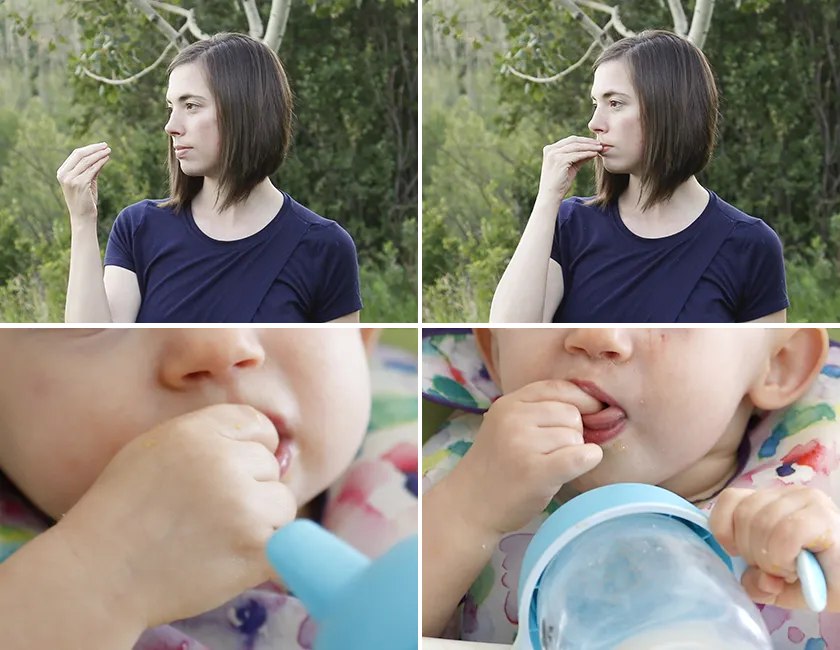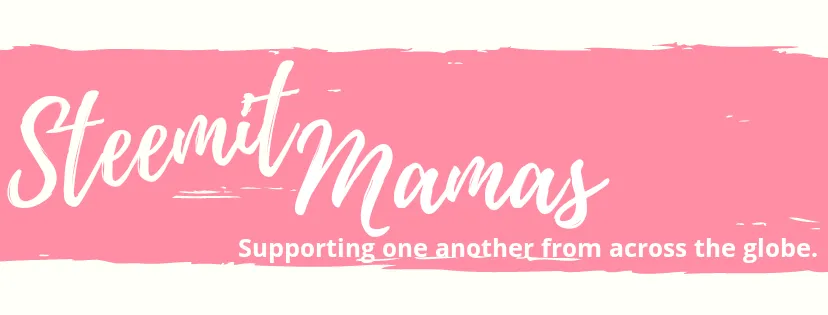Babies are often more capable than adults would believe. They learn so rapidly in their first year of life and are eager to absorb the information given to them. After watching a few friends teach their baby's sign language, I knew this was a communication strategy I was going to use when the time came.
Teaching babies sign language can seem futile in the beginning but if you just stick with it you'll be glad you put in the effort. Babies develop physical skills faster than verbal language but just because they can't yet speak doesn't mean they don't comprehend words.
I believe the first step the cultivating a strong bonds within a family is to have strong communication skills. How can we expect to have any of our needs (hunger, comfort, love, etc...) met without the proper ability to communicate. Plus, if a child is able to efficiently relay their needs to their caregiver, at any age, the chance of a tantrum can be drastically reduced.
A quick review:
Communication Milestones
4 - 6 Months
- Begins using consonant sounds in babbling
- Makes different sounds to express feelings
- Listens and responds when spoken to
- Uses babbling to get attention
7 - 9 Months
- Increases variety of sounds in babbling
- Recognizes the sounds of the names
- Shows recognition of commonly used words
- Participates in two-way communication
10 - 12 Months
- Meaningfully uses "mama" or "dada"
- Responds to simple directions
- Says one or two words
- Imitates speech sounds
Since babies physical and cognitive development happen at a faster rate than their verbal communication, I decided to capitalize on these skills to help open the doors of communication. At six months we began giving them solid foods and by seven months, when food was becoming more routine and less novelty, we started introducing sign language.
5 Simple Signs for Babies
Using American Sign Langue (ASL), we chose to teach our twins five signs that not only had daily application and were easy actions but could also be used beyond the dinner table:
MoreMilkAll Done- Eat
- Please
In our last post, I shared the first three signs we taught our kids. Today, I am going to cover the last two signs, how we taught them, and how they've helped us on our parenting journey.
ASL: Eat
 To sign eat pinch your fingers and thumb together. Starting with your hand slightly away from your mouth begin to tap your lips. Our babies made this association quickly since it mimicked how they often eat with their hands.
To sign eat pinch your fingers and thumb together. Starting with your hand slightly away from your mouth begin to tap your lips. Our babies made this association quickly since it mimicked how they often eat with their hands.At one point, my twins began to become cranky everyday around 2:30. Initially, I thought their nap time might be shifting but that wasn't the case at all. After trying a few things to remedy this regular occurrence, my mom suggested introducing a snack. Low and behold, this is what they were looking for! My babies don't just get hungry, they get hangry.
Now that I knew their eating needs were evolving I decided to teach them the sign for "eat". I wanted them to let me know when those tiny tummies started rumbling. Their activity level changes from day-to-day so it only made sense that their hunger would too.
One day we decided to meet some friends at a park for a BBQ. We knew this event would completely disrupt our normal routine because it fell right at naptime. We rarely deviate from our schedule but decided to go anyway; we didn't want to live life as hermit simply because kids entered the equation. Our kids handled the day amazingly and even used the "eat" sign with Matthew for the first time! They recognized that we were in a new setting and that they would have to find a way to communicate their needs. I am 100% convinced that we avoided a total meltdown this particular day because our kids were able to communicate their needs.
ASL: Please
 To sign please place your hand flat against your chest and move it in a circular motion.
To sign please place your hand flat against your chest and move it in a circular motion.Now that our kids were able to communicate some of their basic needs, we decided to teach them how to ask politely. We believe that we can set boundaries with our kids with kindness. Teaching our kids to ask instead of demand is one of those boundaries. Plus, manners go a long way whether you're a child or an adult.
Maybe it's because of where they are developmentally or because they've had practice with other signs but "please" has been their easiest learned sign. We started by asking, Can you say please? while demonstrating the sign and have progressed to being able to ask, What do you say? or Can you ask nicely?
This sign has taken over for some of the signs they learned earlier, but with consistency we're able to remind them how to ask for different things specifically.
Matthew even mentioned how our boy got his attention one day to ask him for milk. Matt could tell he wanted something so he asked, Do you want milk? at which point little H combined two signs resulting in Milk, please!
Different Applications
Introducing "please" at mealtimes made sense because that is where they learned all of their other signs but this is the most versatile of all. If they approach us for something in anger or frustration we can usually remedy a bad attitude by having them ask nicely. They've already begun to recognize that asking nicely generates faster and more positive results than fussing.
While our kids are not tantrum free, they are incredibly well behaved especially in public and in company. I am not naïve to the reality that a public meltdown will most likely happen at some point in our parenting journey, however, I do believe that giving our children the proper tools to communicate has minimized tantrums. As our kids begin to develop words I will continue to look for tools to identify their needs and feelings so we can keep our lines of communication open.
There are a few more signs our friends have used successfully with their babies that we haven't had a chance to teach yet. Although, that's not to say they can't still be learned. In Part 3, I will cover several of these additional ways that you can start to communicate with your baby before they develop speech.
If you are finding the photos difficult to understand, let me know. If there is enough feedback I would be happy to make an accompanying video to further explain these signs.
And if you enjoyed this post, you may also enjoy: How to Grow a Renegade: Baby-Led Weaning.
All photos and illustrations in this post are original work by Mrs. Canadian Renegade.

